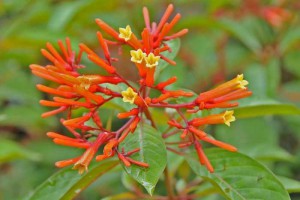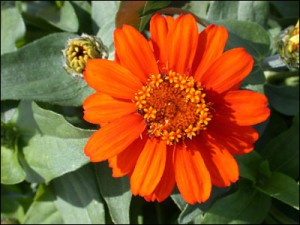So you have alkaline soil… What next?
Throughout the Panhandle, a common problem that often arises is finding a way to raise soil pH. This is due to the fact that we often encounter sandy, acid soils in this region. An often overlooked issue is explaining the process of gardening in a soil that tends to be more alkaline in nature.
Soil pH is measured using a scale from 0 to 14. On this scale, a value of 7 is neutral, pH values less than 7 are acidic, and pH values greater than 7 are alkaline. Soil pH directly affects the growth and quality of many landscape plants. Extreme pH levels can prevent certain nutrients from being available to plants. Therefore, a high pH may make it difficult to grow certain plants.
Often alkaline soils occur in the home landscape as a result of calcium carbonate-rich building materials (i.e., concrete, stucco, etc.) that may have been left in the soil following construction. Soils that contain limestone, marl or seashells are also usually alkaline in nature. There are a few measures that can be taken in order to combat high pH. Incorporating soil amendments containing organic material is the most common method implemented to reverse alkalinity. Peat or sphagnum peat moss is generally acidic and will lower pH better than other organic materials. Adding elemental sulfur is another common practice. A soil test will need to be performed often in order to add the correct amount of sulfur to reach an optimal pH level.
Lowering the pH of strongly alkaline soils is much more difficult than raising it. Unfortunately, there is no way to permanently lower the pH of soils severely impacted by alkaline construction materials. In these circumstances, it may be best to select plants that are tolerant of high pH conditions to avoid chronic plant nutrition problems.
Some plants that will tolerate alkaline soils:
-
Shrubs
- Glossy Abelia (Abelia Xgrandiflora)
- Sweet Shrub (Calycanthus floridus)
- Flowering Quince (Chaenomeles speciosa)
- Burford Holly (Ilex cornuta ‘Burfordii’)
- Indian Hawthorne (Rhaphiolepis indica)
-
Perennials
- Larkspur (Delphinium carolinianum)
- Pinks (Dianthus spp.)
- Firebush (Hamelia patens)
- Plumbago (Plumbago ariculata)
-
Annuals
- California Poppy (Eschscholzia californica)
- Zinnias (Zinnia spp.)
- Cosmos (Cosmos bipinnatus)
- Reference Books for Gardeners and Landscapers Alike - August 3, 2015
- The Danger Within… What’s Hiding in Our Woods - June 15, 2015
- What To Do with All This Rain? Plant a Rain Garden! - April 14, 2015


